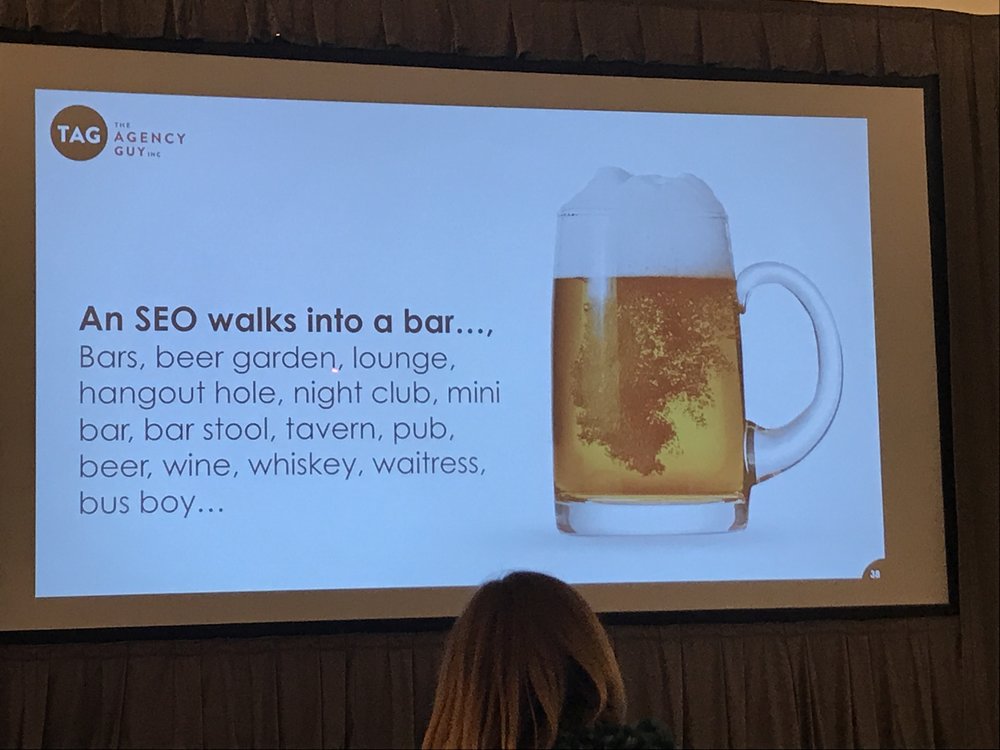Improve SEO or Search Engine Optimization
Want to improve SEO on your website? Get found more easily by search engines like Google? Well, this is probably one of the easiest DIY digital marketing tips we can teach you or your team to do! With so much competition in the outdoor recreation, travel, and lifestyle industries, improving your SEO will increase brand awareness and community engagement. Let’s get started with a quick review of SEO!
What is SEO?
First things first, to improve SEO, you need to understand what it is.
Search Engine Optimization or SEO means designing or optimizing your website to be found easily by search engines through natural, unpaid, or organic means. The goal here is to boost traffic to your website from searches that begin on cell phones, iPads, laptops, and desktop computers. And without paying for it.
Google, Bing, and Yahoo run billions of searches for people each day, often in a matter of milliseconds! So, how can you help these searchers find your products or services? How do land on the first page of Google? Or what about those coveted first few spots?
Of course, you can set up and run Google Ads to try and buy your way into those top spots. If you have an interest in learning how to run Google ads, check out our DIY Guide to Google Ads! However, since we’ve managed SEO strategy for several clients without running ads, here are our top 10 tips or SEO Best Practices to get you started down the right track!
Top 10 Ways to Improve Your SEO
1. Install an SEO Tool on your website! Our favorite tool to improve SEO for a WordPress website is either Rank Math or Yoast SEO. Plus there are free versions of both Rank Math and Yoast that are super easy to use!
2. Select a Keyword or better yet a Keyphrase for each page. An example of this is below!
3. Update the SEO Title tag to include the keyword or key phrase.
4. Use Headings or Heading tags (H1, H2, H3…) that contain your keyword or keyphrase.
5. Ensure your key phrase is in the introductory paragraph!
6. Update your slug or URL to include that keyword or keyphrase.
7. Add internal and external links to related content that supports your keyword or keyphrase.
8. Update the Meta description to include the keyword or keyphrase.
9. Add ALT tags and image descriptions that contain your keyword or keyphrase.
10. Ensure your keyword or key phrase is different for each page, product, or blog.
If some of these tips to improve SEO do not sound familiar, or you are unsure where to find them on your website, drop us a line, and let’s see if we can help. Now let’s dive deeper into examples of keywords and key phrases below!

Help people find you through search engines by improving SEO across your website- whether its a Squarespace, WordPress, Shopify or Wix website.
Improve SEO with Focused Keyphrases
The biggest way to improve SEO on your website and increase traffic is to identify the best keyword or key phrase for each page. Whether this is your blog page, services page, product page, or the about us page. How can people find your products or services if you don’t turn up in a search?
Therefore, each page of your website must have a keyword or keyphrase selected, plus all of the items listed in our tips above, to help readers find your content through organic search.
SEO Keyphrase Example
Okay great, so you know what SEO is, and what a keyword or keyphrase is, but you are unsure how to select the right keyword or keyphrase. As an example, let’s say you choose ‘San Diego outdoor activities’ as your key phrase. This might be something we’d use for our Top 8 Summer Activities in San Diego blog!
But, how then do we weave this key phase into our content? Do we just repeat’ San Diego outdoor activities’ through our blog post?
In truth, keyword or keyword phrase density is not the complete answer. Repeating your keywords a dozen times throughout your blog post or webpage is not the best way to get your content ranked.

My favorite slide from ‘The Agency Guy’ gives you a hint as to what keyword or keyphrases might be used for a bar.
Keyphrase Ranking in Search Engine Results Pages (SERPs)
Google, Bing, and Yahoo are smart and use topic modeling and semantically relevant terms to return your SERPs (search engine results pages).
SERPs are based upon:
-
- variations of words or synonyms
- context of search
- perceived user intent
- location and temporal or time-based patterns
- natural, conversational queries
- long-tail keywords
- the device used, operating system, and installed apps
So back to our keyword or keyphrase example: San Diego outdoor activities. Google knows that the search entries below are all related to San Diego outdoor activities:
- things to do in San Diego
- San Diego adventures
- physical activities in San Diego
- best outdoor activities near me (if you’re in the area)
- unique things to do in San Diego
- San Diego family-friendly activities
- free activities in San Diego
- San Diego Zoo
So, we’ve included all of these terms and more in our Top 8 Summer Activities in San Diego blog! Instead of keyword density alone, use topic modeling and semantically relevant terms to boost your website content!

How can you build your client base and offer freelance services if you cannot be found easily in search?
Improve SEO: Resources That Can Help
If you are struggling to identify the best keywords or keyphrases for your blog, services, or products, or how to optimize your website to be found in search, we recommend adding the Rank Math or Yoast SEO plug-in. In addition, there are several SEO tools you can use:
More Help with Improving SEO on Your Website
Want more help when it comes to improving SEO and website development? We’ve written a few more DIY blogs and case studies to help you increase traffic and create more brand awareness!
- How to Use Your Website to Generate Better Leads
- Easy Website Design + Maintenance
- Case Study: Web Design for Outdoor Outreach
- Case Study: Website Design for Rochelle Ballard, Online Surf Coaching
Until next time, happy searching!
Meredith McConvill, Top Rope Media
Awesome summary. Glad you liked our website workshop!
Thanks,
Monica Moon
Interactive Creative Director | Elevated.com
Thanks so much Monica. Our entire table wished it was longer! You should definitely consider hosting a workshop at Elevated.